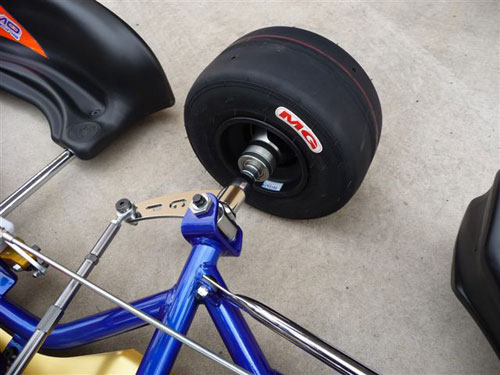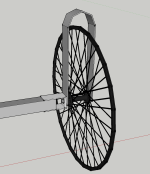Other than side-loading, it doens't matter much about the hub itself for what you want to do--it's all about the axle and the retention mechanism to keep the hub on the axle (i.e., not something that comes unscrewed in the same direction the wheel turns, if there is any chance at all the wheel could cause it to unscrew from friction/etc.).
The larger the hub's axle hole, the better, because you can use larger axles, which can support more weight.
One thing to remember is that you are not just supporting the actual weight of the vehicle. You must also support the weight *under vertical accelerations* as well, which means when you hit bumps or potholes, etc., the g-forces created effectively multiply those forces times the weight of the vehicle to create the forces on the axle. And in forward movement, then if you hit bumps that are large enough to cause any slowdown of hte vehicle, some of the forward momentum is also being converted itno forces against the axle, too, depnding on hte angle at which it hits.
When yo uhave a normal double ended axle, that load is spread across it without bending loads of the kind experienced by single ended axles, which get all the load at the point between the hub on the side where it's mounted, and the mounting point itself.
Side-loading...you'd have to look up how wheels are made and why, which is an oft-argued-about topic, with not a whole lot of scientific analysis posted on the web about exactly why certain things are done (just that some work, some don't, and some are disagreed about).
Side loading will also put loads on the axle, as well as the wheel itself--the larger the wheel diameter the higher the loads on the axle (just like the longer the prybar used, the greater the prying force on something is).




